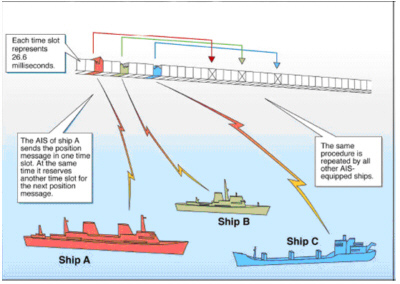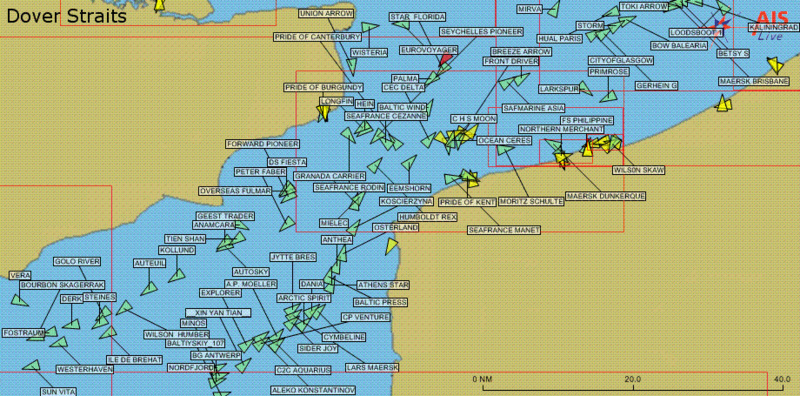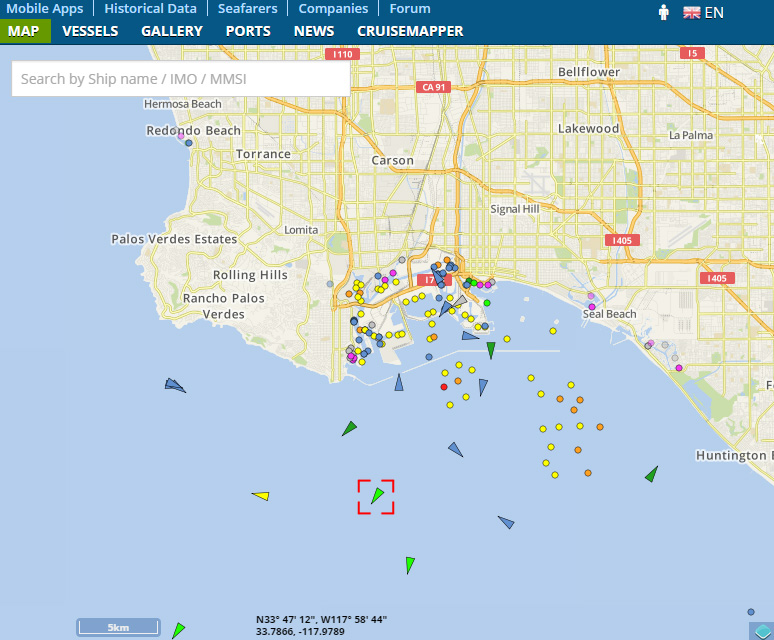![]() The past few decades have brought about key advances in shipment tracking. These advances have improved safety, efficiency and security in the industry, making aspects of shipping significantly easier and less stressful than they had once been.
The past few decades have brought about key advances in shipment tracking. These advances have improved safety, efficiency and security in the industry, making aspects of shipping significantly easier and less stressful than they had once been.
1. Automated Identification System (AIS)
In use since 2002, the Automated Identification System requires ships of over three hundred tons to carry transponders. These transponders transmit the ship’s position to other nearby ships, and to maritime authorities, if the ship is near land.

AIS transponders are helpful for providing accurate location information for traveling vessels. However, because they use very high frequency radio waves which travel horizontally across the globe, they only have a range of about fifty nautical miles.
Effect on trade
The biggest benefit that AIS provides is collision prevention, especially in foggy or inclement weather, or narrow waterways such as the Strait of Gibraltar. In these conditions having accurate positioning information about the ships around is crucial to preventing accidents.
For example, in 1987, the passenger ferry MV Dona Paz crashed into the MT Vector off the coast of the Philippines, killing over four thousand people. If AIS had existed at this time, the accident could likely have been prevented.
AIS also gives other important information to maritime authorities, such as speed, heading, and cargo. All of this data helps sea transport to flow more smoothly, with fewer accidents and greater efficiency
2. ORBCOMM Satellite AIS
Beginning in 2004, the company ORBCOMM began launching satellites into space to attempt to vastly increase the reach of AIS. By 2008, in partnership with the U.S. Coast Guard, ORBCOMM launched a total of six satellites. All of these satellites were equipped with an AIS transponder. This means that the satellites were capable of receiving and transmitting very high frequency radio waves from ships at sea.
These radio waves extend much further into space than they do laterally across the globe, greatly expanding the previous range of only fifty nautical miles. In fact, because of these satellites, ships can now be tracked in near real time from their departure to the time they reach their destinations.
Effect on Trade
Significantly expanding the reach of vessel tracking had many benefits. Chief among them are increased business efficacy, hazardous weather avoidance, and improved search and rescue capabilities.

With greater shipment tracking, businesses can keep a much closer eye on their vessels as they move merchandise back and forth across the oceans. This adds a higher element of security when shipping. It also enables businesses to more accurately predict when a ship will reach port.
This means that companies can unload ships faster when they do come in, because they can time the operation more precisely.
For example, if you have a cargo ship that you know will be arriving at the Port of San Francisco at 9.00 a.m., you can have your entire crew already there waiting to unload by 9.00 a.m. This is much more efficient than trying to guess the time of arrival, potentially being off by hours.
In terms of hazardous weather avoidance, it’s much easier to steer a ship out of harm’s way if you know exactly where the ship is, and where the dangerous weather is going to be. The more accurate the tracking, the more easily bad weather can be avoided. For example, if a shipping company realizes that one of its vessels is heading straight for a violent storm, it can contact the captain, and instruct him to steer the ship west for a hundred miles. Once the storm is avoided, the ship can resume its initial heading.
Finally, satellite AIS enhances search and rescue missions by providing more accurate vessel location data. Imagine trying to find a distressed vessel in the middle of the Pacific Ocean during a monsoon without advanced tracking equipment!
Satellite AIS also gives maritime authorities the power to see if there are any other vessels in close proximity to the distressed vessels. If there are, they can contact the vessel and ask the captain to help the ship that’s in trouble. This may be critical if the closest search and rescue authority is thousands of miles away.
3. Vesselfinder.com
Vesselfinder.com is a website created in 2012, offering free AIS tracking for over sixty thousand ships across the globe in real time! Anyone who wants to find a major commercial vessel can simply log on and search for the ship by name.

Vesselfinder.com represents an incredible step forward for the shipping industry. Whereas long-range AIS tracking data used to be exclusive, and require a licensing fee from ORBCOMM, Vesselfinder.com does it for free. This means that ships are now easier to track than ever before.
Effect on Trade
Vesselfinder.com has taken a complicated and expensive process and made it instantly available to anyone in real time. If your company has ordered a large quantity of parts for solar panels in Asia, you can literally log on to VesselFinder.com and watch the ship carrying your parts cross the ocean!
Vesselfinder.com has also added a new level of security to international shipping. It gives companies more power to monitor their shipments. This increased level of security gives companies more confidence in making business transactions that require international shipping. A lot of the mystery has been removed from the process and a considerable amount of oversight has been added. This is a tremendous development for international trade.
Have any of these shipping technology improvements changed your shipping practices? Any others that come to your mind?






disqus comments